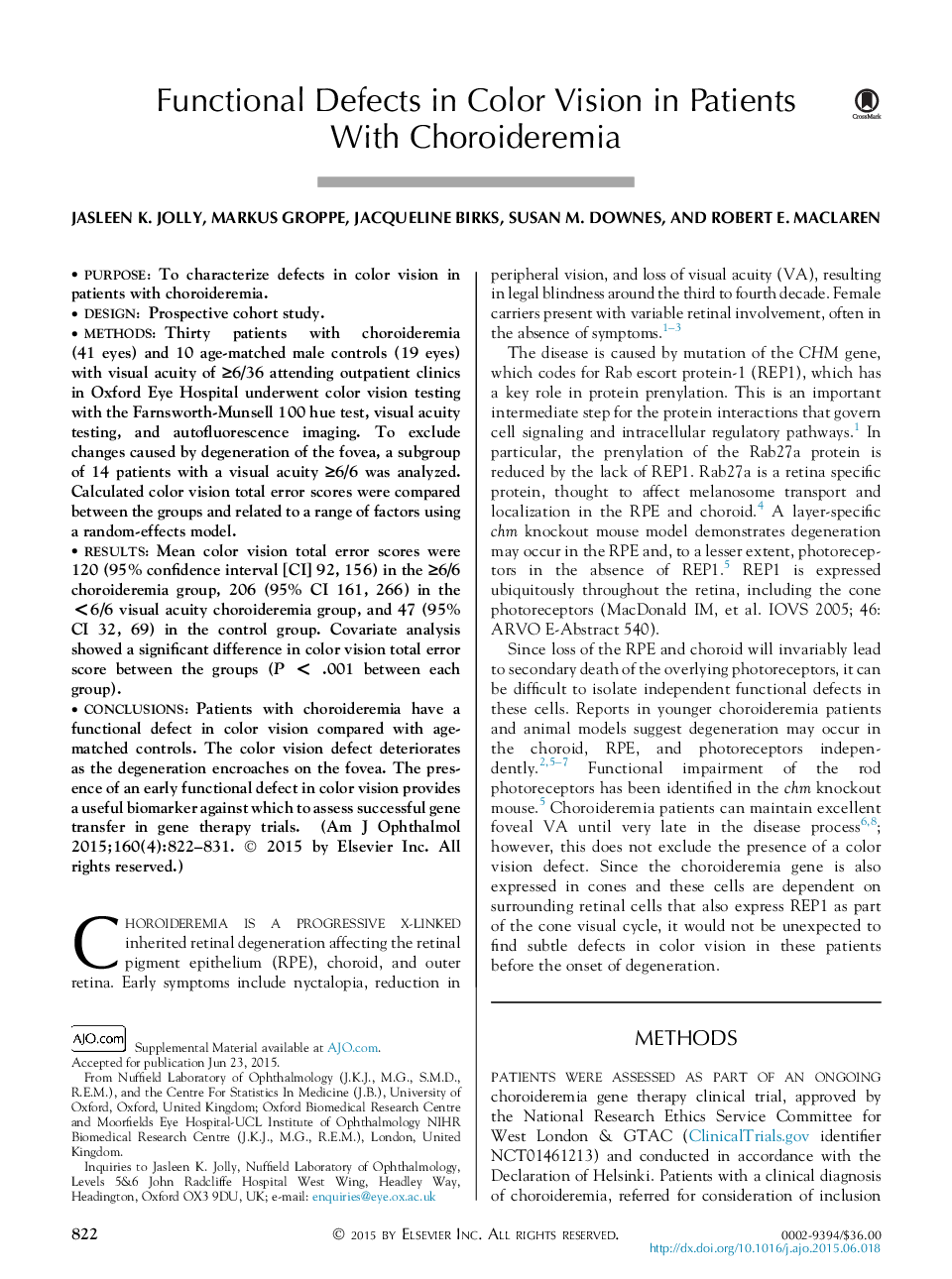| Article ID | Journal | Published Year | Pages | File Type |
|---|---|---|---|---|
| 6195049 | American Journal of Ophthalmology | 2015 | 13 Pages |
PurposeTo characterize defects in color vision in patients with choroideremia.DesignProspective cohort study.MethodsThirty patients with choroideremia (41 eyes) and 10 age-matched male controls (19 eyes) with visual acuity of â¥6/36 attending outpatient clinics in Oxford Eye Hospital underwent color vision testing with the Farnsworth-Munsell 100 hue test, visual acuity testing, and autofluorescence imaging. To exclude changes caused by degeneration of the fovea, a subgroup of 14 patients with a visual acuity â¥6/6 was analyzed. Calculated color vision total error scores were compared between the groups and related to a range of factors using a random-effects model.ResultsMean color vision total error scores were 120 (95% confidence interval [CI] 92, 156) in the â¥6/6 choroideremia group, 206 (95% CI 161, 266) in the <6/6 visual acuity choroideremia group, and 47 (95% CI 32, 69) in the control group. Covariate analysis showed a significant difference in color vision total error score between the groups (P < .001 between each group).ConclusionsPatients with choroideremia have a functional defect in color vision compared with age-matched controls. The color vision defect deteriorates as the degeneration encroaches on the fovea. The presence of an early functional defect in color vision provides a useful biomarker against which to assess successful gene transfer in gene therapy trials.
